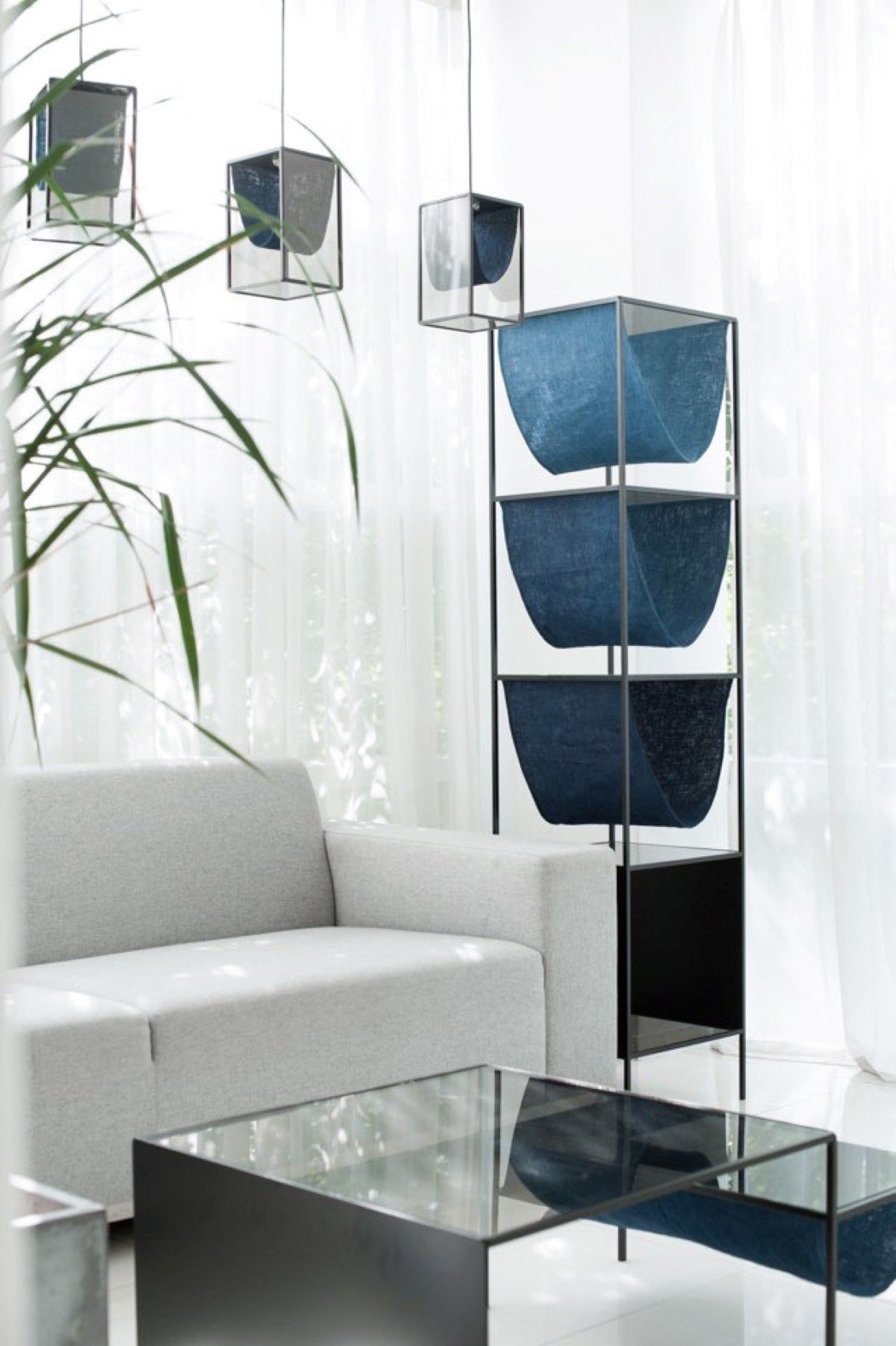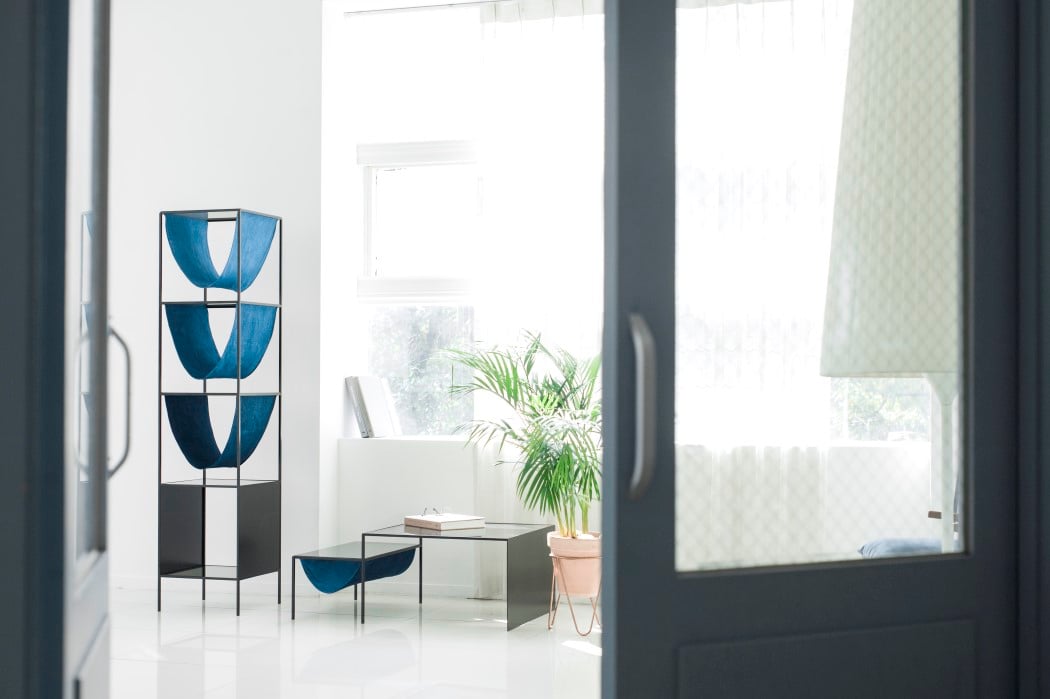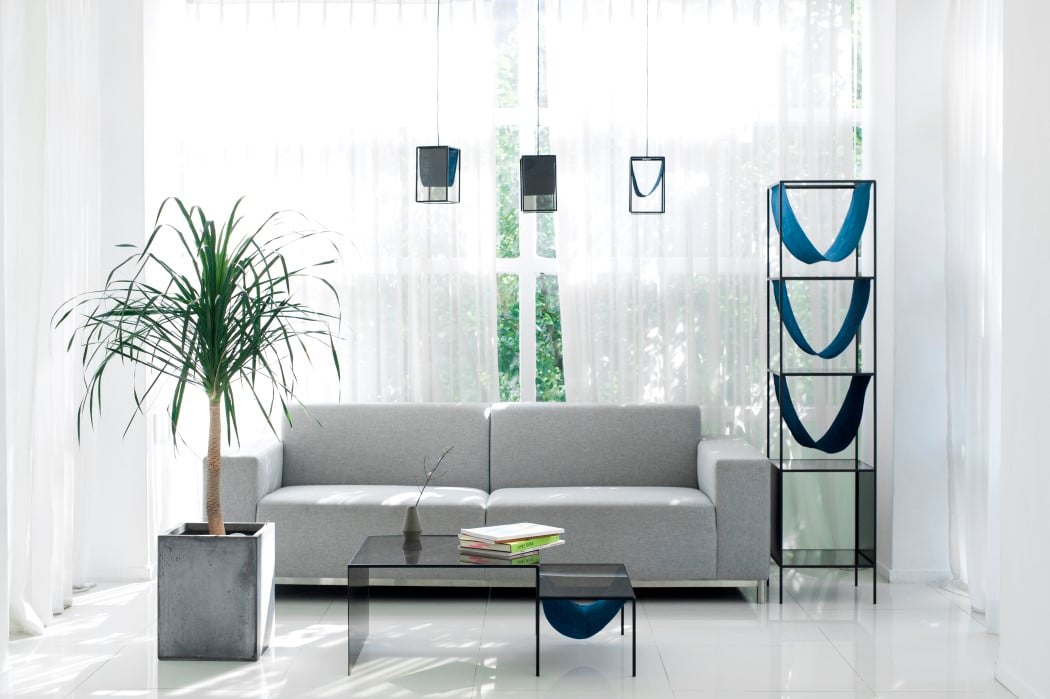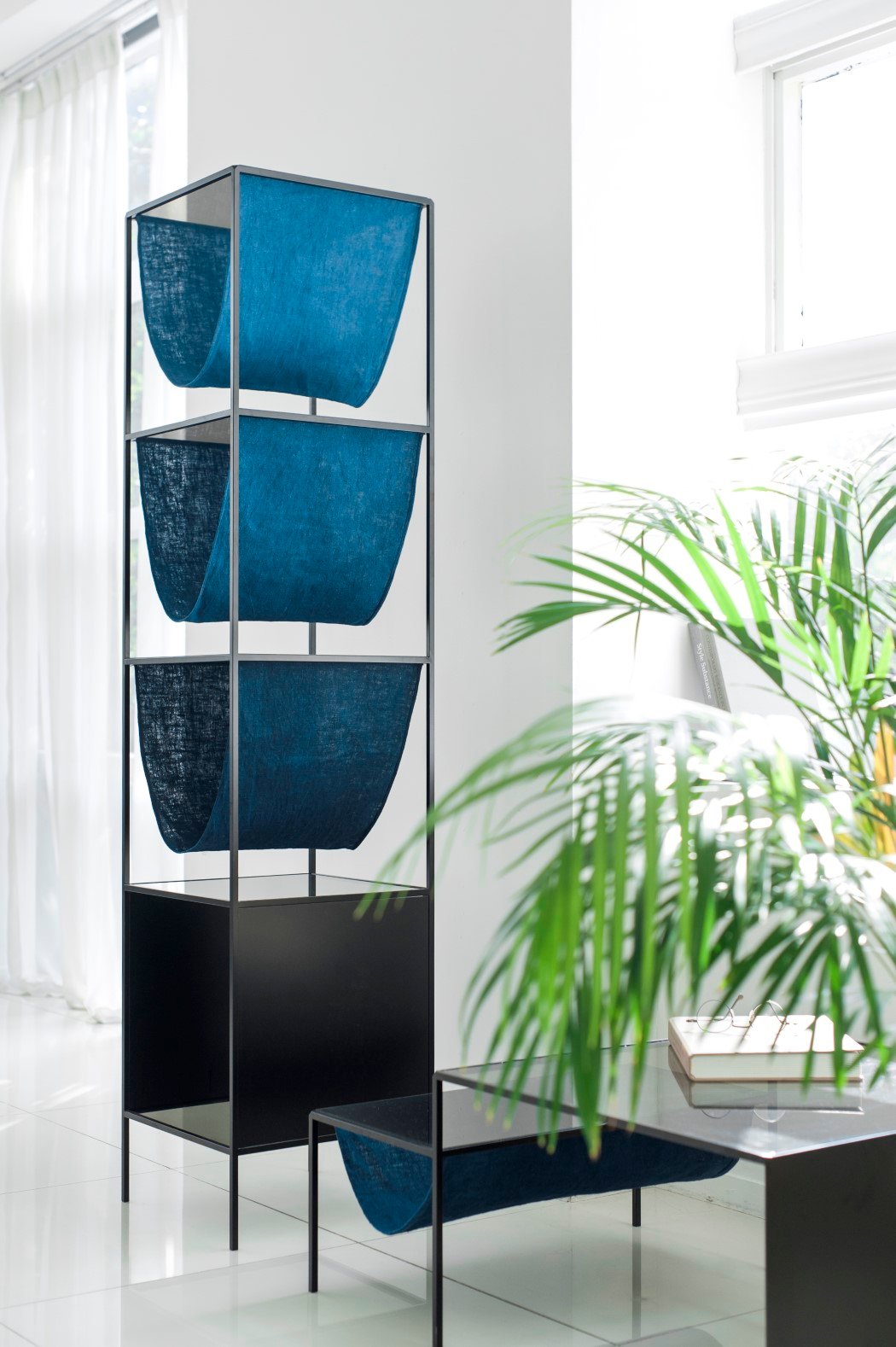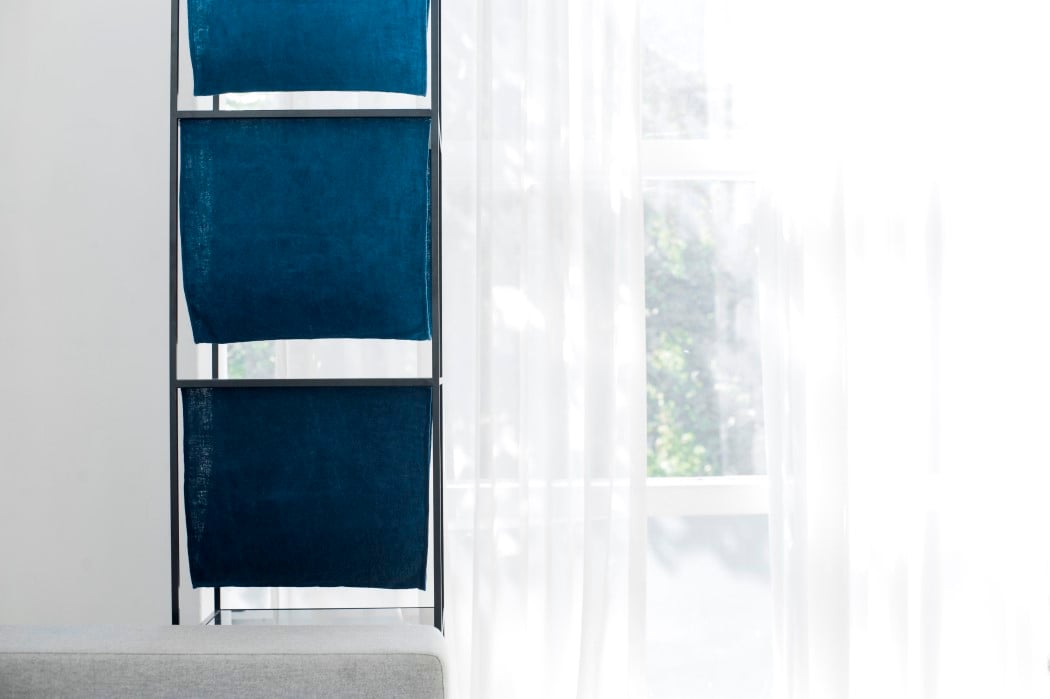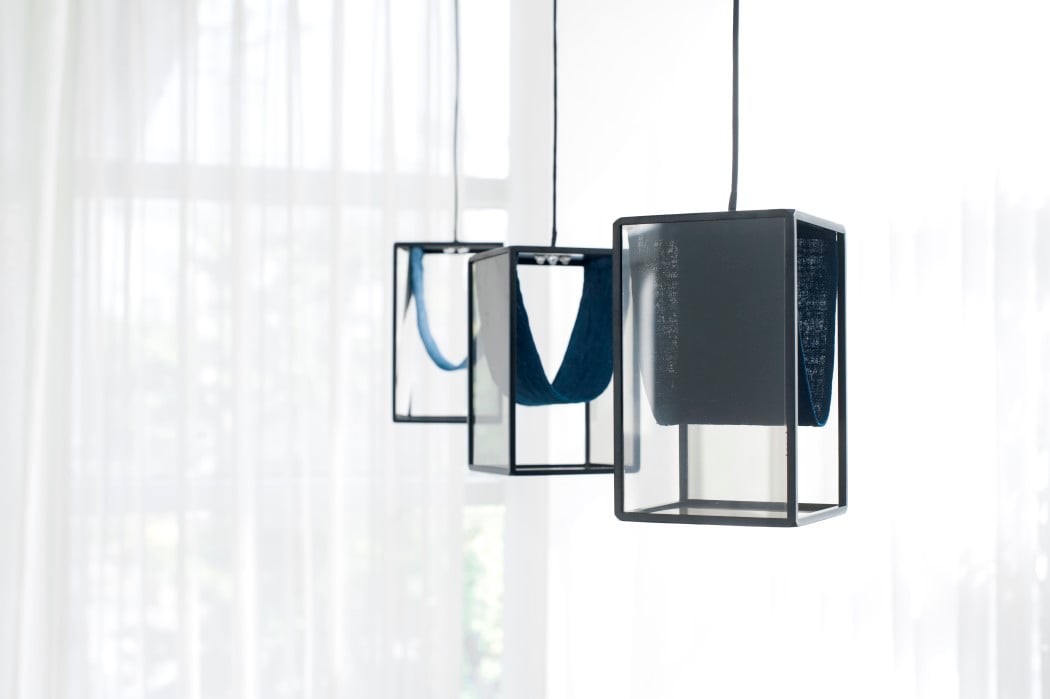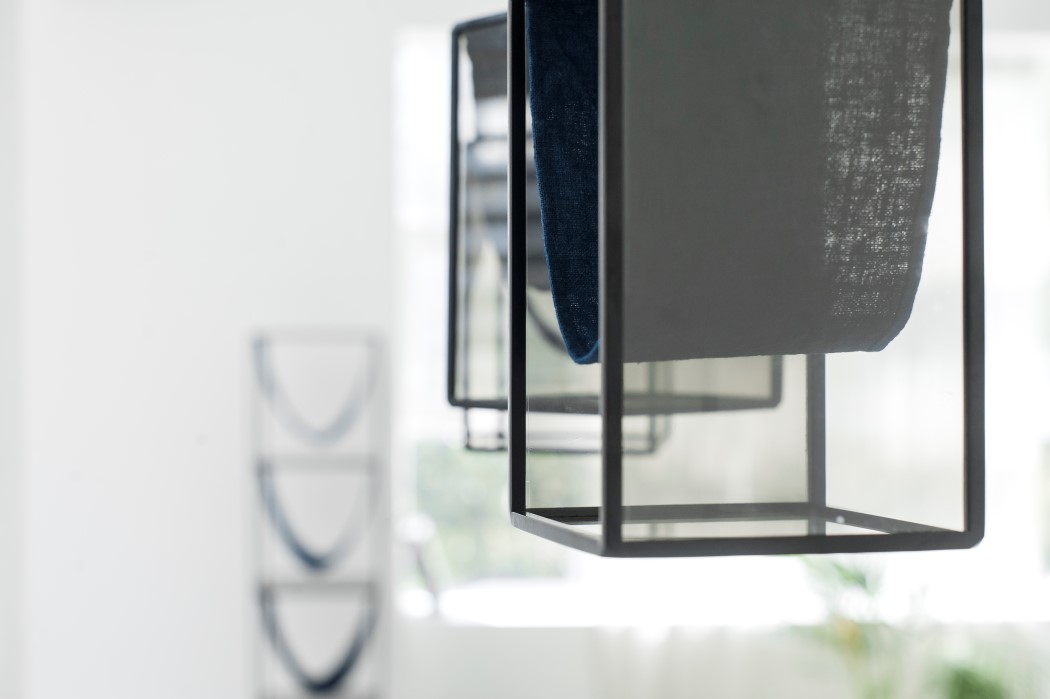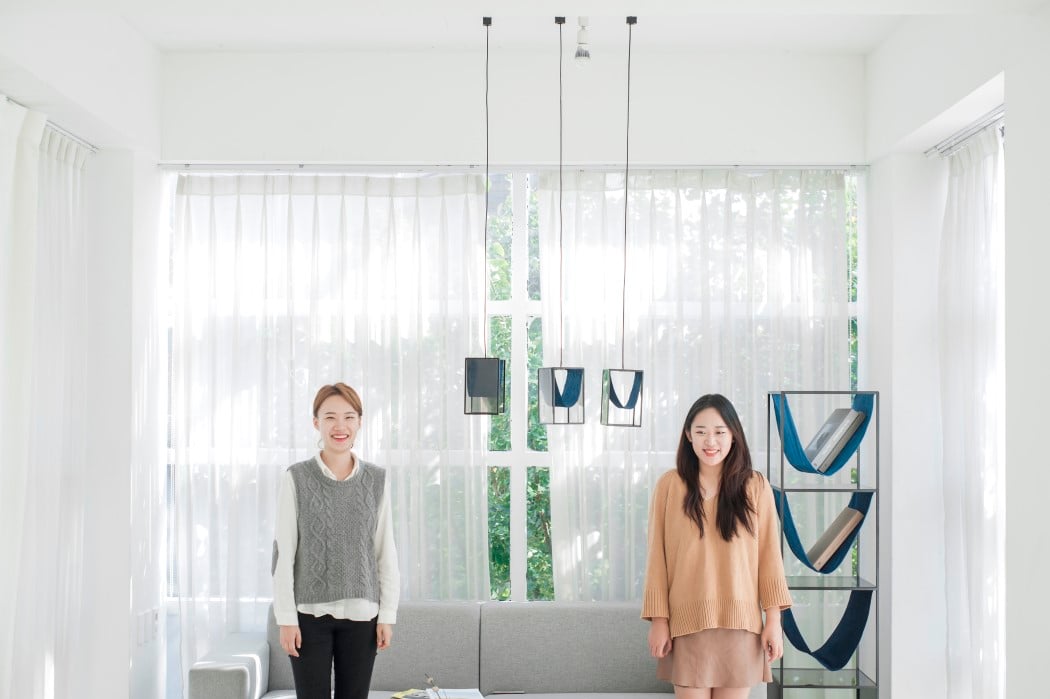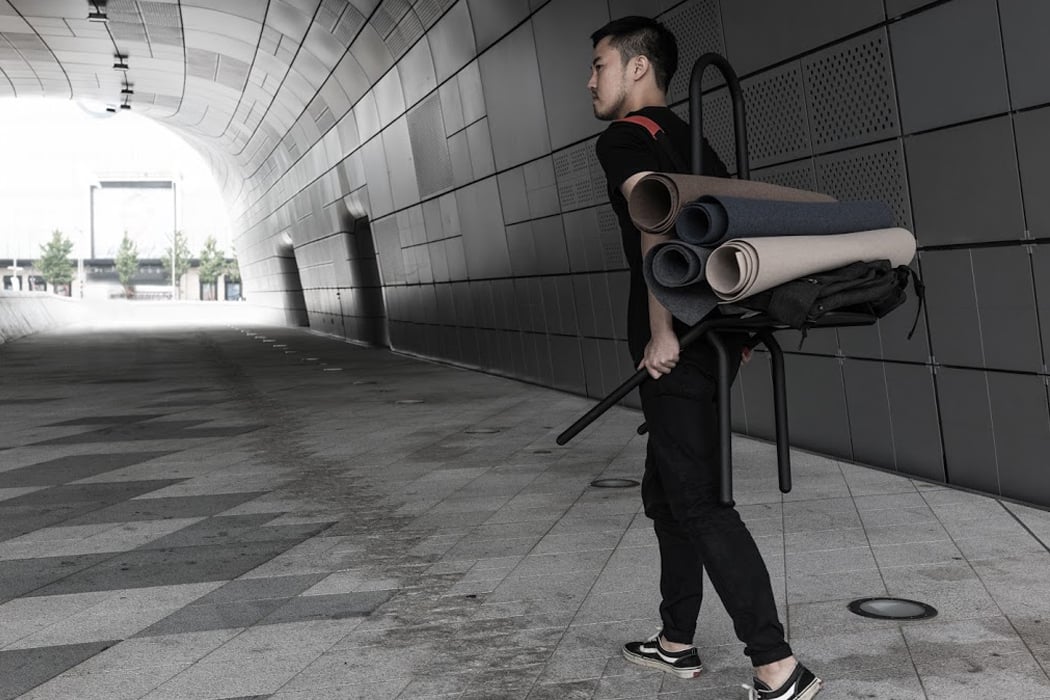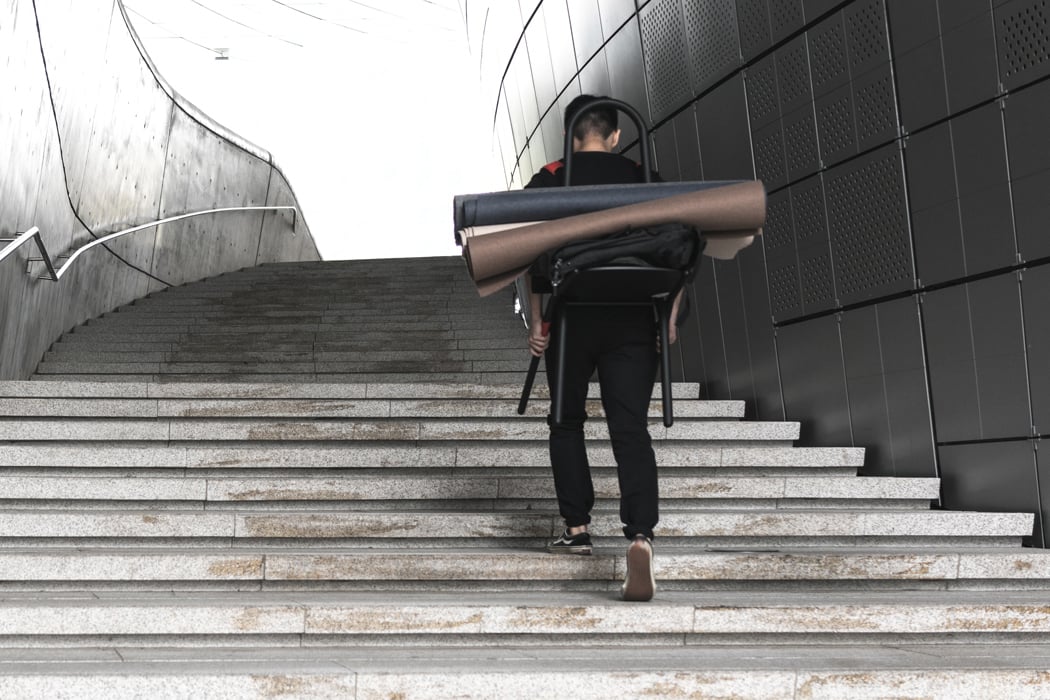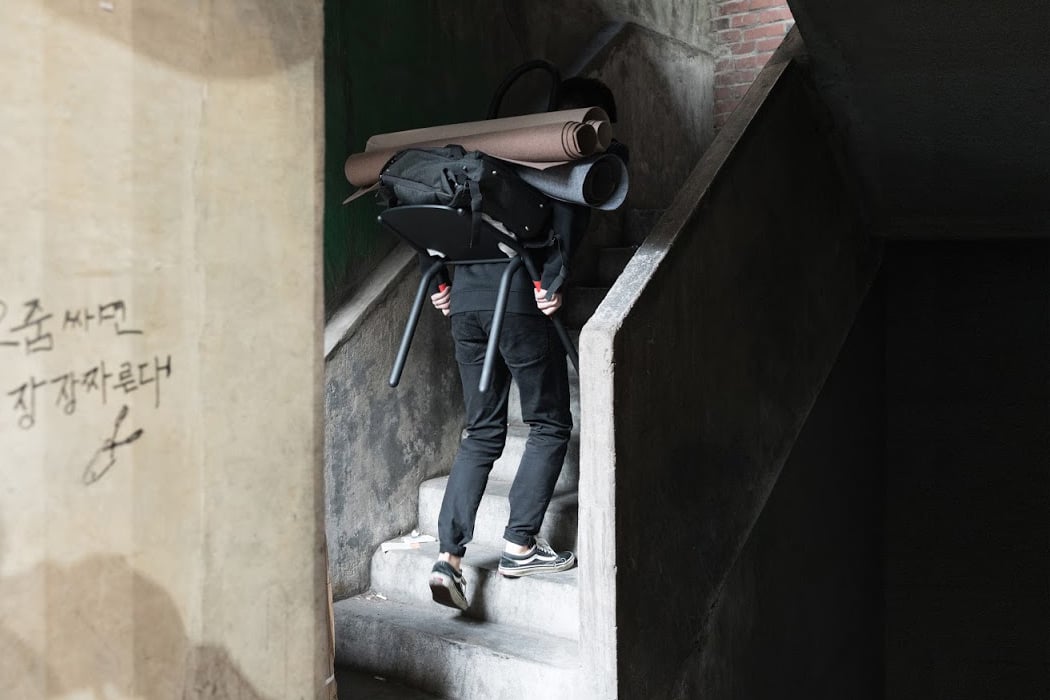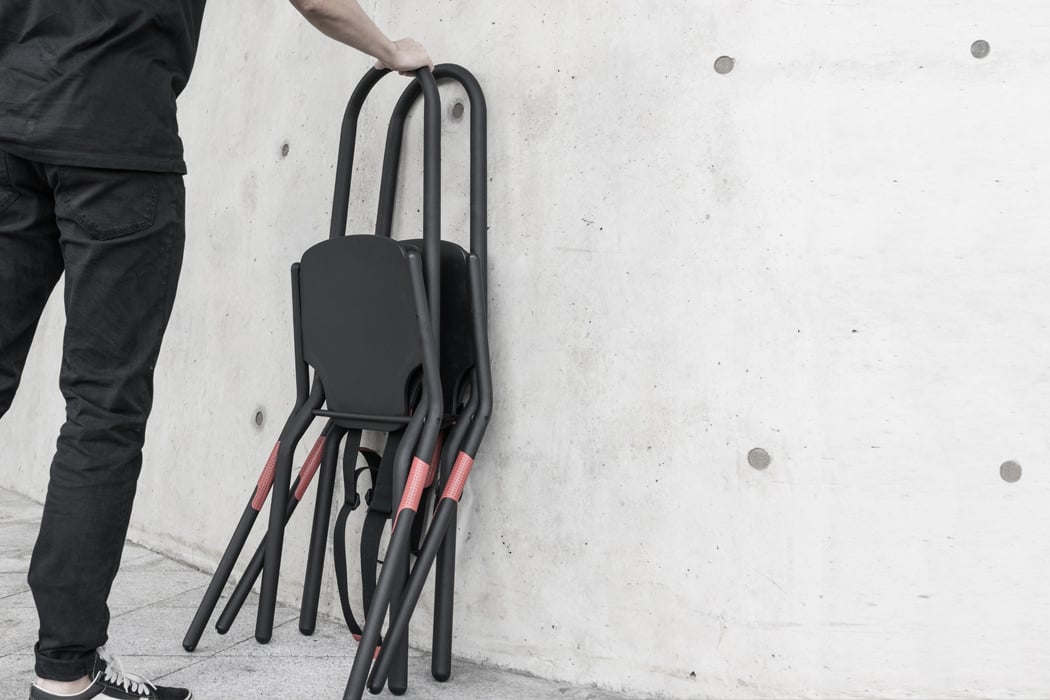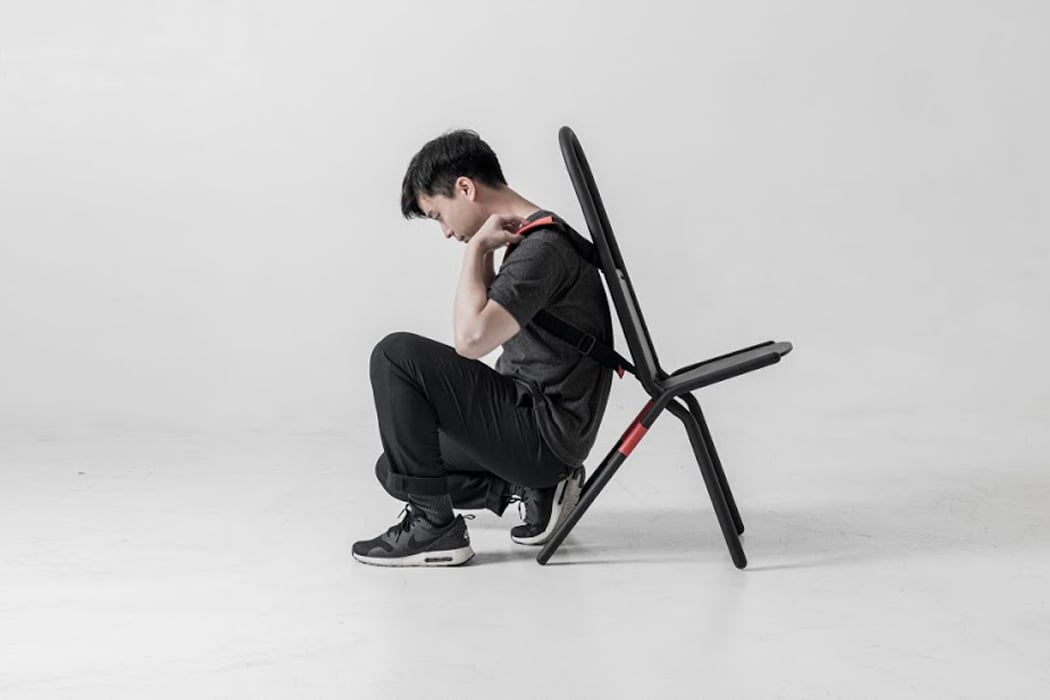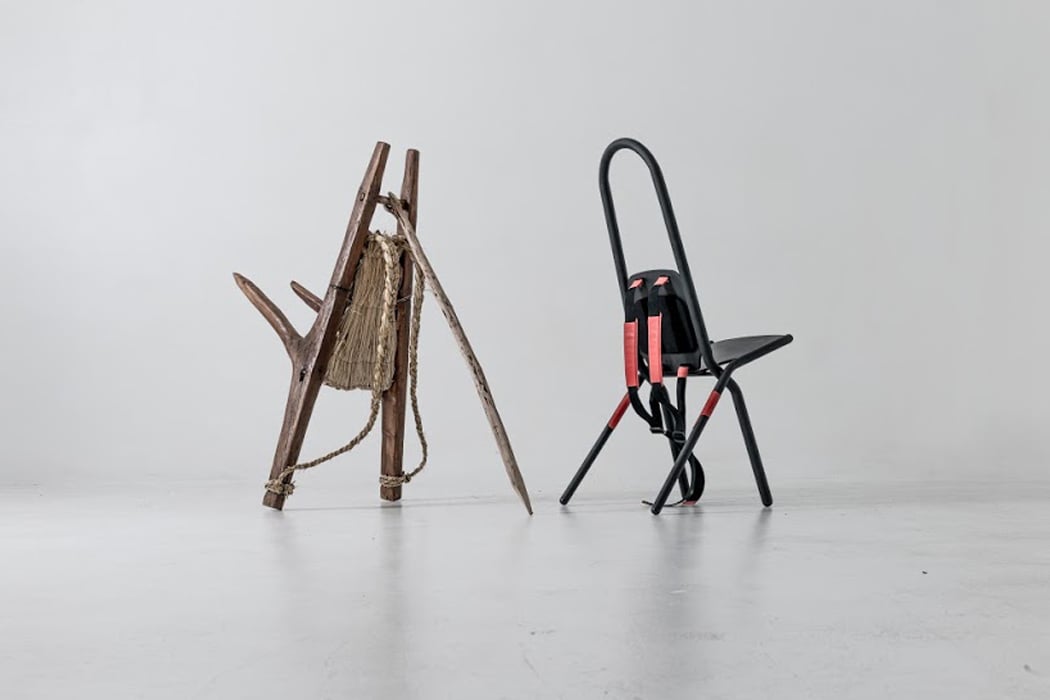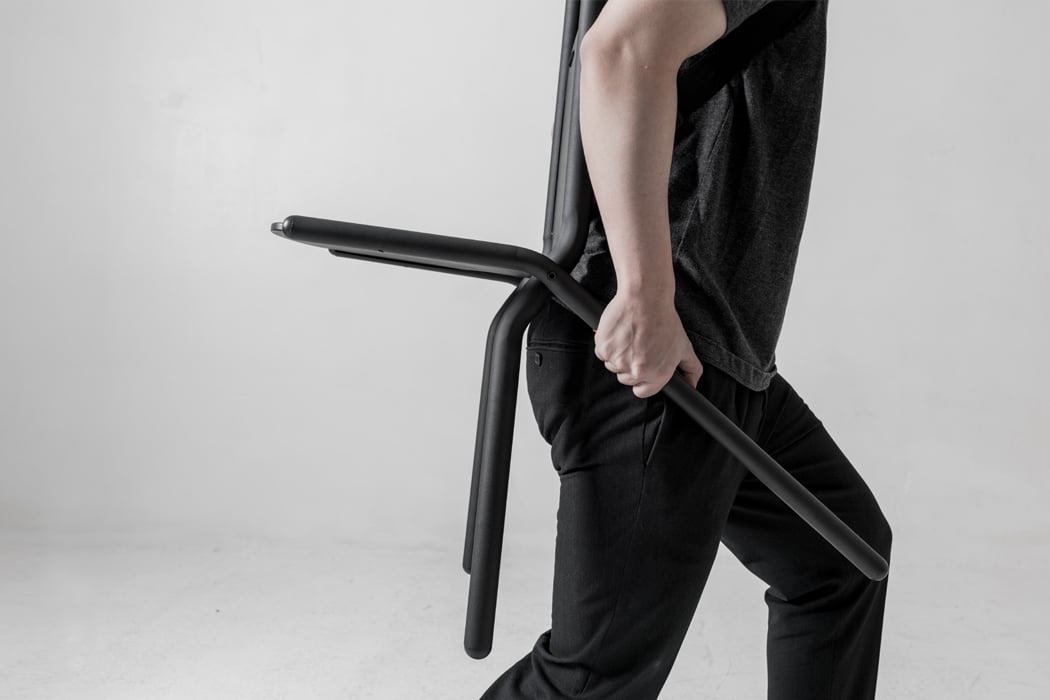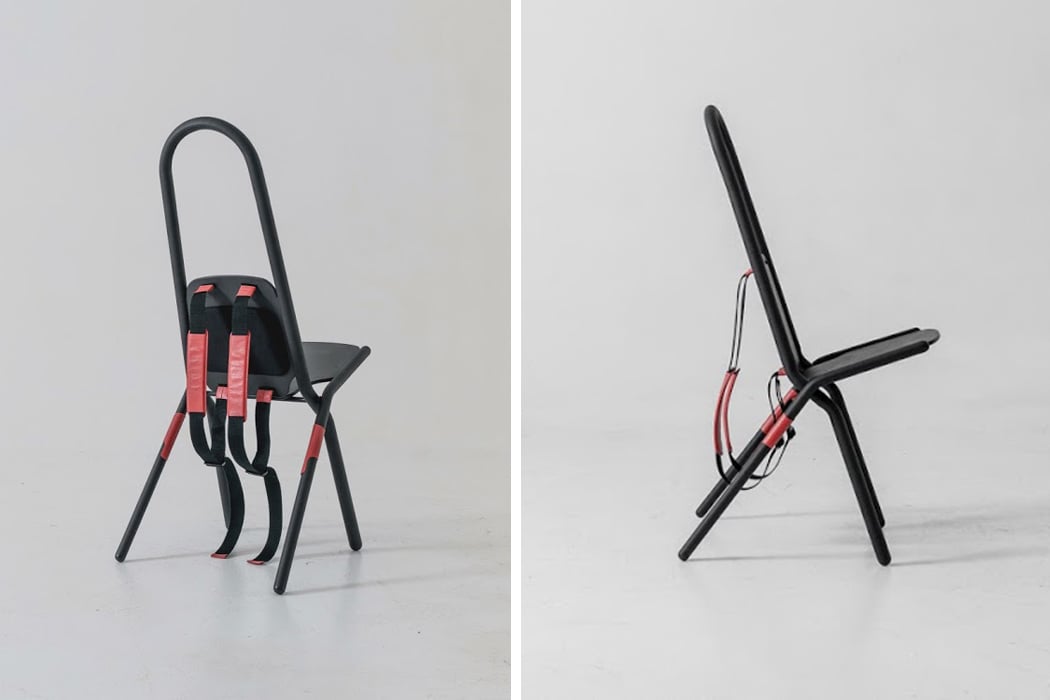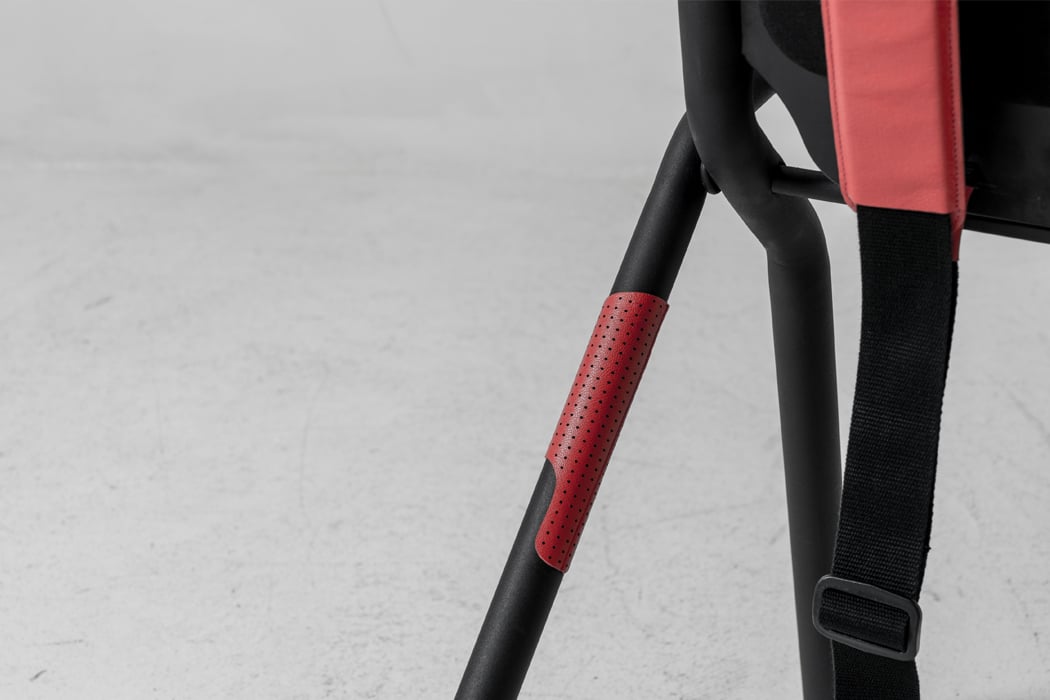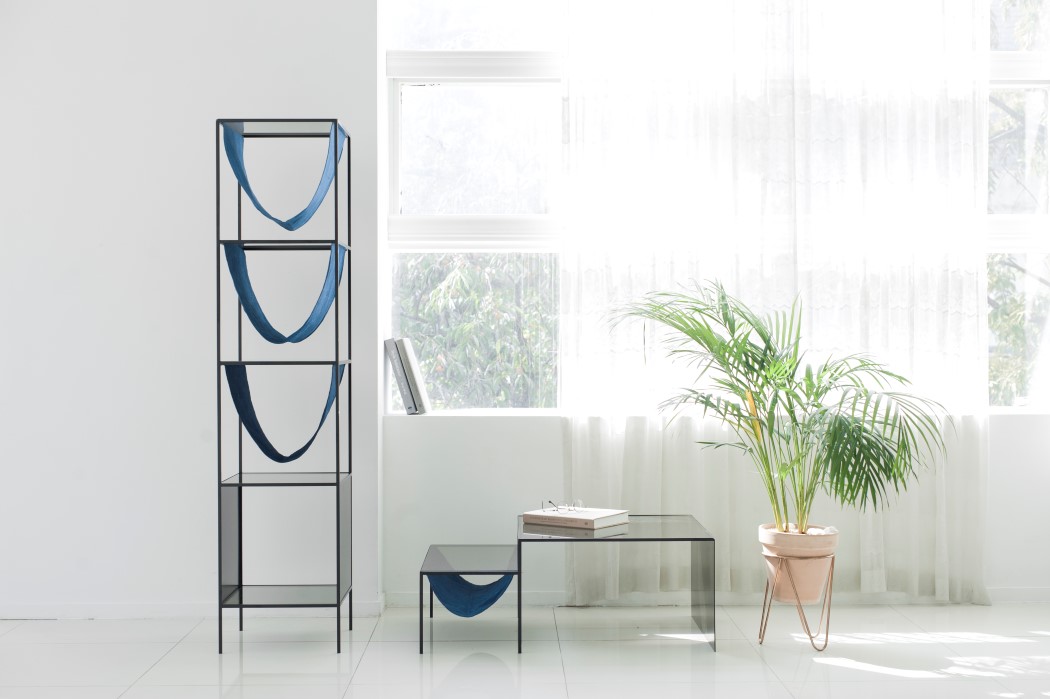
MbyM or Mass-Production by Master is a design strategy to help revive cultural crafts, the old ancestor of modern design. Design draws a lot of parallels with indigenous arts and crafts. Artisans could very well have been the first set of design professionals.
MbyM’s first product is a cabinet that explores storage in a very quirky way with its fabric ‘hammocks’ for storage. The ‘Master’ in this case is Master Luca Hong, an expert in natural dyeing and a Living National Treasure in South Korea. The MbyM explores traditional natural Indigo dyeing in this design, with its beautiful gradients on the hand-woven fabric. These natural elements stand proud against the otherwise geometric and ‘perfect’ cabinet. Loving it!
Designers: Nahyun Go, Sua Park & Master Luca Hong.
